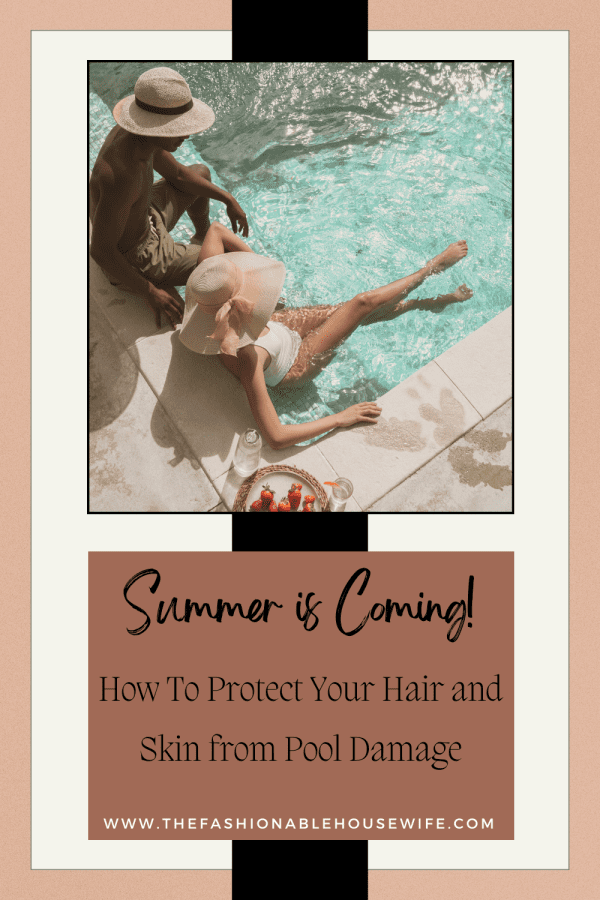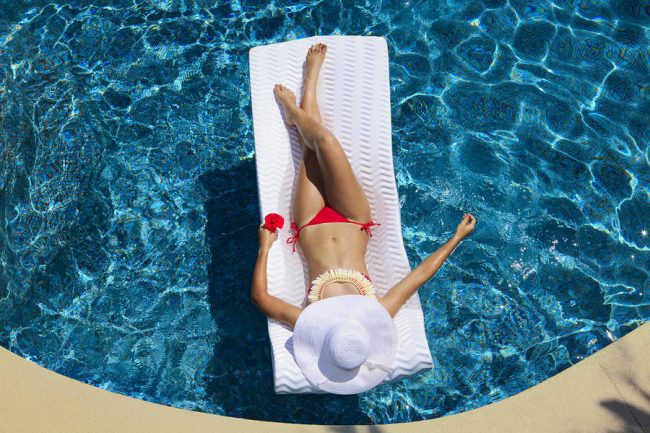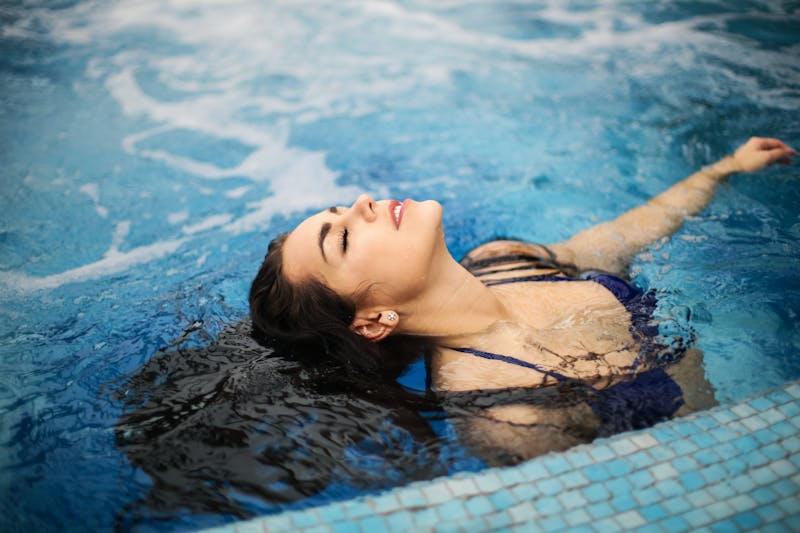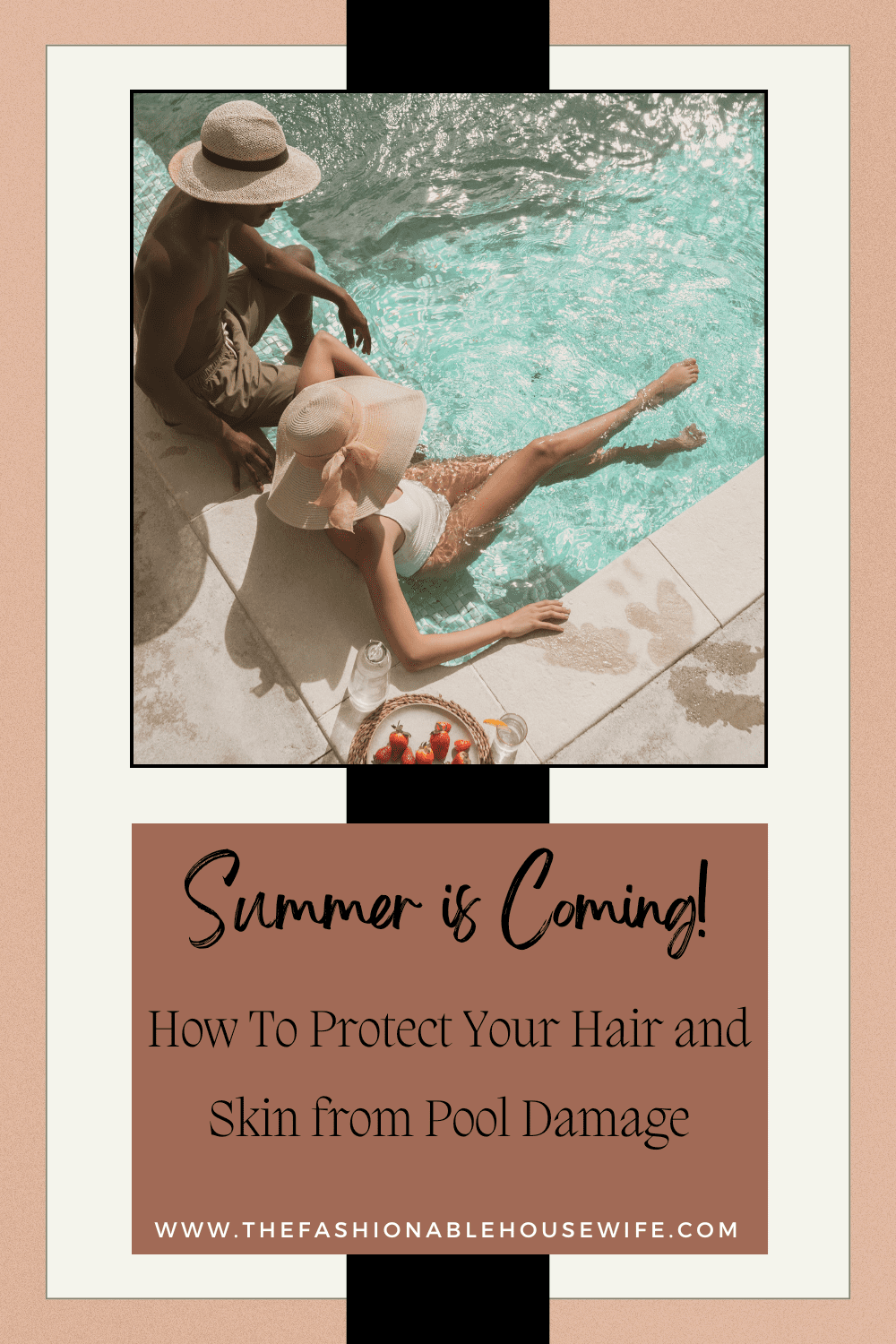Protect Your Hair and Skin from Pool Damage

Swimming is a great way to stay active and cool off, but pool water can take a toll on your hair and skin. Chlorine, chemicals, and even regular tap water can strip away natural oils, causing dryness, irritation, and long-term damage. But protection isn’t just about the right beauty products—your pool maintenance choices play a huge role, too.
Switching to a saltwater pool, balancing pH levels, and using proper filtration can make a significant difference in reducing harsh chemical exposure. By combining smart pool upkeep with effective skincare and haircare strategies, you can enjoy the water without worrying about dryness, discoloration, or irritation. Here’s everything you need to know to protect your hair and skin from pool damage.
How Pool Water Damages Hair and Skin
Chlorine strips away natural oils, leaving hair dry and brittle while causing skin irritation and dehydration. Since chlorine is a type of bleach, it oxidizes and breaks down proteins in hair while stripping away essential oils from the skin. Saltwater is gentler, but all water, even from the tap, can still dry out hair and skin, leading to dullness and dryness.
Add sun exposure into the mix, and you get a triple threat—UV rays break down hair proteins and collagen, accelerating damage and discoloration. Sun intensifies everything, frying hair cuticles and depleting collagen in the skin, making wrinkles and dullness appear faster. Together, they create a dehydration trifecta that leaves hair brittle and skin feeling like a dry sponge.
How Pool Maintenance Affects Hair and Skin Health
A well-maintained pool can make a big difference in how much damage your hair and skin experience. While chlorine pools are common, high levels of chlorine and unbalanced pH can worsen dryness and irritation. Here’s how smart pool care can help:
- Switch to a Saltwater Pool
Saltwater pools use a salt chlorine generator that produces lower, more consistent levels of chlorine, reducing harsh chemical exposure.
- Maintain Proper pH Levels
The ideal pool pH is between 7.2 and 7.8. If the water is too acidic or too alkaline, it can irritate the skin and scalp.
- Use a Pool Enzyme Treatment
Enzymes help break down oils, lotions, and organic contaminants, reducing the need for excessive chlorine.
- Install a UV or Ozone Purification System
These systems reduce the amount of chlorine needed, leading to gentler water for skin and hair.
- Shower and Rinse Filters
If possible, use a filtered outdoor shower before and after swimming to rinse off contaminants and prevent chlorine buildup.

How to Shield Your Hair and Skin from Pool Damage
Rinse with fresh water before swimming—like a sponge, hair and skin absorb less pool water when already wet. Apply a leave-in conditioner or a lightweight oil (like coconut or argan) to create a protective barrier. For skin, use a water-resistant moisturizer to lock in hydration before diving in.
Take it a step further with a DIY protective rinse—mix water with a few drops of argan oil or a lightweight leave-in conditioner for extra protection. Instead of regular lotion, use a petroleum-free barrier balm to lock in moisture without clogging pores. If you swim often, wearing a silk or satin scarf under your swim cap can reduce friction and tangles.
A snug swim cap is the best defense, but if that’s not your style, braid your hair to minimize water exposure. Coat strands with a silicone-based leave-in or oil for added protection. For skin, apply a mineral-based barrier cream or water-resistant sunscreen before swimming.
If a tight latex swim cap feels uncomfortable, try a coated fabric cap for protection without the headache. Braiding hair is great, but coating braids in an oil-based serum offers extra defense. For skin, a pre-swim body serum with hyaluronic acid creates an invisible moisture shield before you hit the pool.
The Essential Routine to Keep Hair and Skin Healthy
Rinse off immediately after swimming—don’t let chlorine sit. Use a sulfate-free shampoo to cleanse without stripping moisture, followed by a deep conditioner. For skin, a hydrating body wash and an aloe-infused moisturizer help restore lost hydration.
Avoid hot showers—they open the cuticle and let chlorine sink deeper. Instead, start with a cool-water rinse, then use a chelating shampoo once a week to remove chlorine buildup without over-drying. For skin, a milk-based body wash helps neutralize chlorine’s drying effects, and a post-shower ceramide mist locks in hydration without feeling greasy.
After swimming, rinse with lukewarm water and apply a cooling mist with aloe or cucumber. A gentle exfoliation once a week removes chlorine residue, and a rich body lotion with ceramides or shea butter locks in moisture.
Skip thick lotions that sit on top of dry skin. Instead, layer hydration—start with a post-swim aloe + glycerin spray, followed by a gel-based moisturizer with niacinamide to repair the skin barrier. If your skin feels itchy or tight, chilled green tea compresses can calm inflammation fast.

DIY and Natural Remedies to Reverse Pool Damage
Coconut oil is a deep-conditioning powerhouse, while aloe vera soothes the scalp and adds moisture. Apple cider vinegar rinses help remove chlorine buildup and restore shine. For extra nourishment, try a DIY mask with avocado and honey.
For an alternative to coconut oil, try an oat milk rinse—oats contain beta-glucans that restore moisture and calm scalp irritation. A banana + yogurt hair mask replenishes proteins lost to chlorine, and a rice water rinse can help rebuild strength in overexposed hair.
Hydrated skin starts from within—drink plenty of water. Healthy fats from avocados, nuts, and salmon keep skin and hair resilient. Antioxidant-rich foods like berries and spinach combat free radical damage from sun and chlorine exposure.
Beyond just drinking water, eat more silica-rich foods like cucumbers and bell peppers—silica strengthens hair cuticles and boosts skin elasticity. Flaxseeds and chia seeds are packed with omega-3s that help retain moisture. Bonus: chamomile or hibiscus tea can help balance pH levels, which chlorine and saltwater tend to throw off.
Poolside Protection
Opt for a reef-safe, broad-spectrum sunscreen with SPF 30+ for skin. For hair, UV-protective sprays with sunflower seed extract help prevent fading and brittleness. Leave-in conditioners with SPF add an extra layer of defense.
Look for “swimproof” sunscreens designed to bond better to wet skin. A vitamin C-infused sunscreen helps counteract chlorine’s oxidative effects. For hair, skip heavy oils and use a UV-protectant dry oil spray that shields without making strands greasy.
Keep it simple: a detangling spray for quick hair refresh, an after-sun body lotion with aloe, and a quick-dry hair wrap for effortless post-swim care. Add a tinted SPF moisturizer and a lip balm with SPF for an easy, sun-safe glow.
A scalp sunscreen stick allows for easy, mess-free application. A pre-loaded leave-in conditioner brush (like a detangling brush with built-in serum) makes post-swim hair care a breeze. And a solid lotion bar is perfect for quick hydration without leaks or spills in your bag.

How to Protect Color-Treated Hair from Pool Damage
Blondes, use a purple shampoo weekly to counteract brassiness. For all shades, a pre-swim leave-in treatment with UV protection helps prevent fading. Rinse immediately after swimming and use a color-safe deep conditioner to keep tones vibrant.
Blondes, go beyond purple shampoo—rinse with club soda after swimming to neutralize green tones from chlorine. All hair colors benefit from a diluted apple cider vinegar rinse to keep tones fresh and cut through mineral buildup. Before swimming, apply a sheer layer of color-safe hair oil to repel water and prevent fading.

